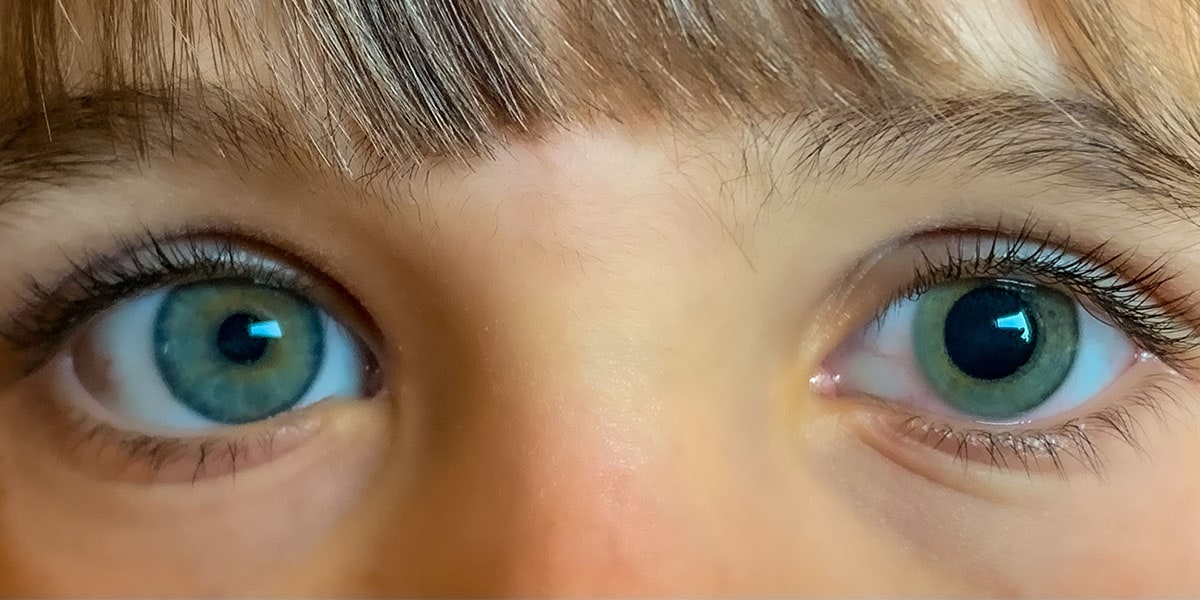Understanding constricted eye pupils
Miosis refers to small, constricted pupils. Your pupils (the black part of your eye) naturally constrict and expand in response to changes in light or the distance of an object you’re focusing on. However, it is possible for a person’s pupils to naturally be smaller or larger than normal.
A change in pupil size can also indicate an injury, infection, or other medical condition. If you have questions about your pupil size, contact the eye experts at Assil Gaur Eye Institute (AGEI) for an eye exam.

What is the importance of understanding pupil size?
Understanding pupil size is essential in assessing certain health conditions. It can provide valuable insights into eye function and the broader neurological system. The iris muscles regulate pupil size, which controls the amount of light entering the eye.
By understanding what can make a pupil change size, ophthalmologists at AGEI can better diagnose and monitor health conditions.
What are normal pupil size changes?
The size range of pupil size can vary between individuals, but pupils are roughly 2-8 millimeters in diameter on average.
Pupils constrict or dilate in response to the amount of light in the environment — this is called the pupillary light reflex. In bright light, the pupils constrict to reduce the light entering the eye, thus protecting the retina from excessive light exposure. Conversely, in dim light, the pupils expand. Dilated pupils allow more light into the eyes, enhancing vision in low-light conditions.
Focusing on objects also influences pupil size. When looking at an object close up, your pupils constrict to improve focus. When looking at something far away, your pupils will dilate.
Schedule your consultation today with the internationally recognized doctors at AGEI
Or call
866-945-2745
Potential causes for pupil constriction
Aside from the natural constriction and dilation of your pupil, this part of the eye can also change in response to medical conditions, medications, and other factors.
Horner’s syndrome
Also known as oculosympathetic palsy, this rare condition affects the way your brain communicates with one side of your face. Symptoms of Horner’s syndrome may include a droopy upper eyelid, constricted pupil, and lighter eye color on the affected side of the face.
Cluster headache with small pupils
Cluster headaches (as the name implies) come on in clusters. Each headache may last about 30 minutes and you can have up to eight of these headaches within a 24-hour period. Cluster headaches sometimes produce symptoms similar to Horner’s syndrome, such as pupil dilation and a drooping eyelid on one side of the face.
What drugs make your pupils small?
Some drugs can cause miosis or pinpoint pupils as a side effect, including:
- Opioid drug use — Opioid-type drugs like codeine, oxycodone, and fentanyl.
- Diazepam — An anti-anxiety sedative.
- Hypertension medications — Medications for high blood pressure such as clonidine.
- Antihistamines — Over-the-counter antihistamine medications like Benadryl.
- Prescription eye drops — Eye drops such as pilocarpine, which are used to treat glaucoma.
Injury
A traumatic head injury can cause the pupils to constrict. Nerve damage or internal hemorrhaging (which can be caused by a head injury) can cause pinpoint pupils.
Small pupils could also be a sign of an eye injury.
Eye inflammation
Conditions like iritis or uveitis, which involve inflammation inside the eye, may cause the pupils to constrict in response to eye pain.
Stroke
A brainstem stroke can cause abnormally constricted pupils. Symptoms can also include double vision, dizziness, slurred speech, and severe balance problems.
Light exposure
People who spend long amounts of time outdoors in the sunlight tend to have smaller pupils than those who spend most of their time in darker environments.
What to do when your pupils are small
Small pupils can be normal, but if your pupils have changed in size, seek medical attention from AGEI’s eye experts.
As previously discussed, small pupils can be a sign of an underlying condition or a life-threatening medical emergency — such as a stroke or severe head trauma.
Why trust Assil Gaur Eye Institute for your pupil’s health?
AGEI has assembled a team of top ophthalmologists from around the country who offer their patients the highest quality of specialist eye care in the United States.
The ophthalmology experts at AGEI are nationally recognized for their eye care and treatment options for a full range of conditions, including eye conditions such as hyperopia glaucoma, macular degeneration, retinal detachment (and other diseases of the retina), cornea conditions, contact lens, floaters and flashes, dry eye, presbyopia, astigmatism, farsightedness, myopia, nearsightedness, and other vision correction procedures (refractive surgery) such as LASIK surgery, and PRK.
Please call (866) 945-2745 or make an appointment online.
We are conveniently located for patients throughout Southern California and the Los Angeles area in or near Beverly Hills, Santa Monica, West Los Angeles, West Hollywood, Culver City, Hollywood, Venice, Marina del Rey, Malibu, Manhattan Beach, and Downtown Los Angeles.













